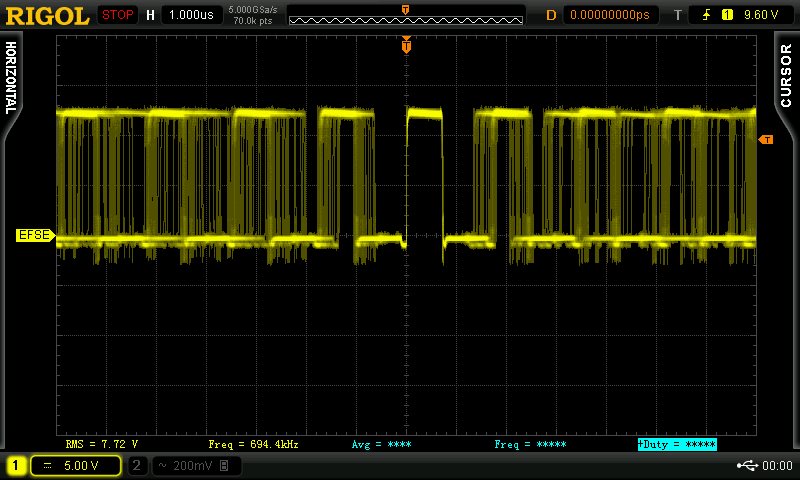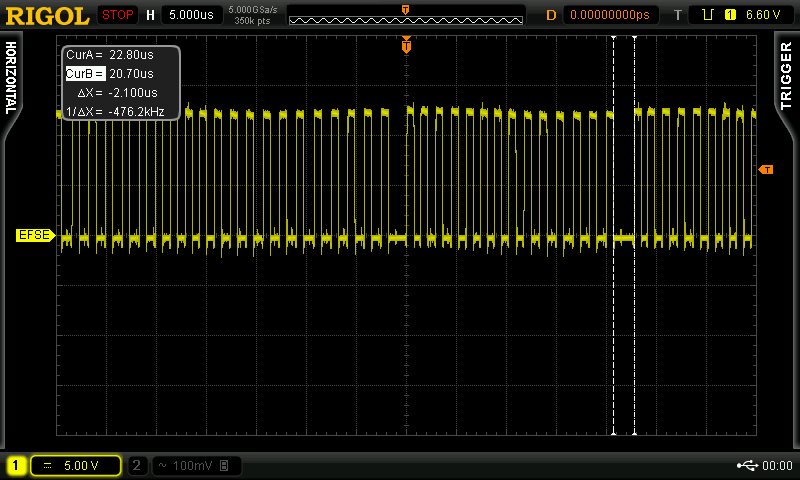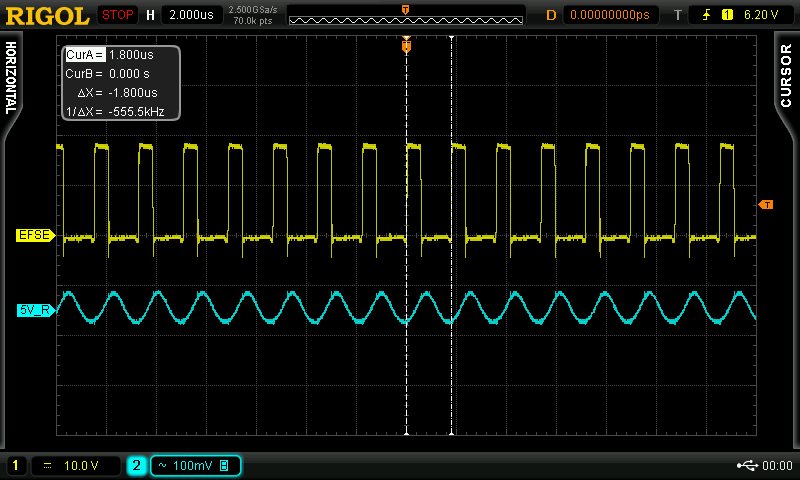Hello,
I have used LM3150MHX/NOPB as a buck converter for 5V/15A output with the input varying from 9V to 15V. The switching frequency is calculated to be 500KHz. I have used WebBench simulation tool for reference. However I have observed a jitter in the switching frequency at the SW pin.The ON time remains constant but the OFF time varies continuously which results in the variation of switching frequency. This results in higher ripple voltage of around 70mV to 130mV depending on load current. I have attached a oscilloscope screenshot of the switching waveform. Can you please suggest some advice as to why the frequency is changing or how to prevent it?
Also, I have observed that there is a large OFF time of around 1.3uS to 2uS which occurs randomly, even though the output is loaded with 3A. I have attached the screenshot of the waveform which shows this. Can you please give an insight to this matter?
Thanks,
Bhargav Saikia







